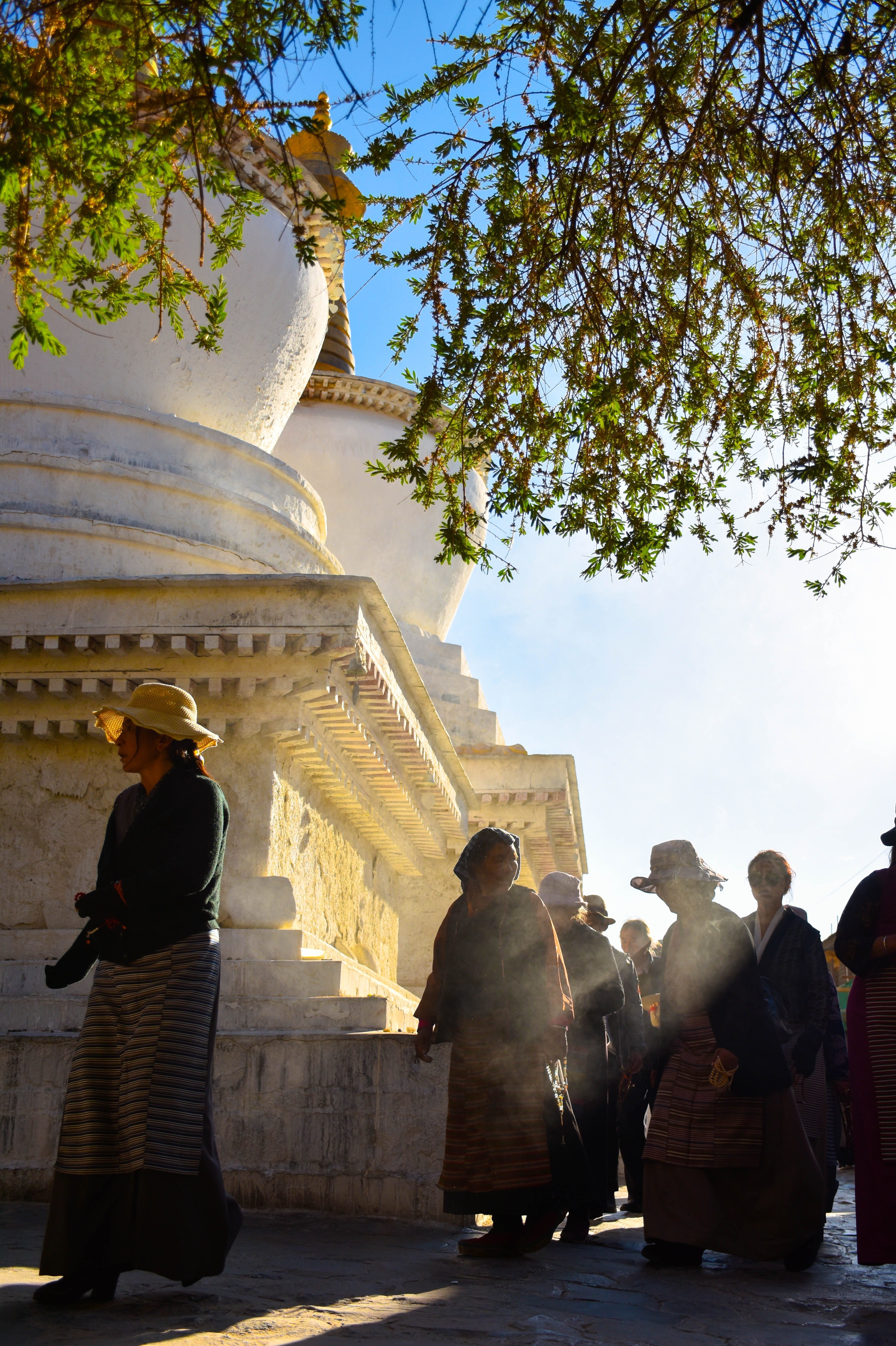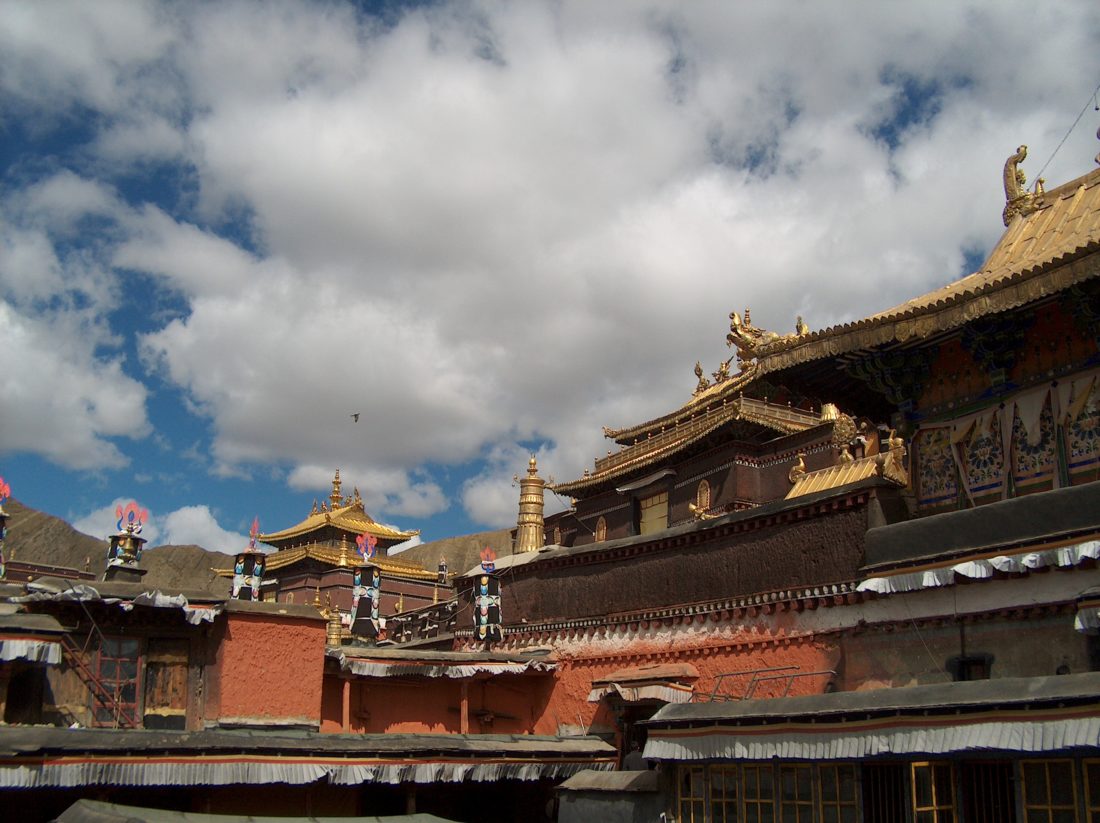The path to the center in Tibetan architecture
Erhmei Yuan and Amar Sen write about the unique spatial relationship between paths and center in Tibet.
The Deborah J. Norden Fund, a program of The Architectural League of New York, was established in 1995 in memory of architect and arts administrator Deborah Norden. Each year, the competition awards up to $5,000 in travel grants to students and recent graduates in the fields of architecture, architectural history, and urban studies.
Erhmei Yuan and Amar Sen received a 1995 award.
A notion of center is a fundamental inherent in every society. Our research presents to the public and the architecture profession a different set of fundamentals. The Tibetan notion of center is defined as an ever-changing focal point continually approached during the daily meditative sequence of a Buddhist. This center is always marked by the most religious structure in a Tibetan city, village or landscape. Unlike in the West, where the center is typically approached axially, in Tibet, the center is experienced by a sequence of three concentric paths – the Lingkhor, Barkhor, and Nangkhor. In 1996, we traveled to Lhasa and Shigatse, Tibet to study this unique spatial relationship between their paths and center. We documented the three circumnavigational paths around Jokhang Monastery of Lhasa and Tashilhumpo Monastery of Shigatse. We created these three-dimensional representations of the monasteries and the paths and various analytical images to express the dynamic nature of the experience.
In Lhasa, you come across the Barkhor by accident. Pushing by shoppers and grocery stalls on a narrow street, you suddenly emerge into a continuous mass of pilgrims, monks, merchants and shoppers. This mass is moving fast – to the left. Joining them, you are carried along a wide street with stalls on either side selling monks’ robes, prayer paraphernalia, shoes, hats, rugs, door hangings, and anything else available in Tibet. The flow of Tibetans is made up of all different tribes, ages, and most notably speeds. It is common to be aggressively pushed aside by a teetering old woman spinning her prayer wheel and frantically trying to make it to the temple before she runs out of energy.
The Barkhor, the middle of three pilgrimage routes, is about half of a mile long and is flanked by large Tibetan houses traditionally homes of aristocrats and government officials. The path is marked by four fifty foot, yak hair-topped flagpoles, towering over all buildings in the area. Every Tibetan squeezes to be sure to pass on the outside of these markers, creating dense and vigorous bottlenecks in the relentless flow of human traffic. Occasionally, to the right, you glimpse Jokhang Monastery – its barely visible gold roofs the only clue to a distinction from its neighbors. As you near the entrance of the Jokhang on the Barkhor, the street dramatically widens to a small plaza. The Jokhang is now in full view, its yellow steps flowing down into the plaza and its stark white walls dotted with colorful windows and capped by golden ornament. Turning one last bend in the Barkhor, you skim along the monastery’s west wall in the closest contact that the Barkhor allows. The massive wall tilts out slightly while countless merchants camped at the base try to make a sale.
Approaching the Jokhang’s entrance, you are blinded by the reflection of the sun on the bright white painted stone facade until, passing the threshold, you are quickly engulfed in near darkness. Pushing by prostrating pilgrims and rushing through 20 foot high red columns, you soon emerge in the Jokhang’s light-filled central courtyard.
Biographies
has been at Handel Architects in New York, where he has completed several large projects in Washington, DC, and is currently working on the Residences at the Ritz-Carlton in Philadelphia. Amar and her partner Erhmei have been sponsored by New York Foundation for the Arts to continue their investigation into their interest in Tibetan architecture whenever possible, and have named their two year-old daughter Kora – the Tibetan word for “Path Around a Spiritual Center.”
has worked for Kohn Pederson Fox, and is currently producing marketing materials for major developers across the United States. Erhmei and his partner Amar have been sponsored by New York Foundation for the Arts to continue their investigation into their interest in Tibetan architecture whenever possible, and have named their two year-old daughter Kora – the Tibetan word for “Path Around a Spiritual Center.”
Explore
Circle Shade – 2πR4: Inspiration & poetics
Folly/Function 2017 winner Eva Jensen describes her design process.
Tokyo’s pantry: Tsukiji and the commodification of market culture
Alice Colverd and Alexander McLean write about Tokyo’s Tsukiji fish market, which the city plans to relocate in time for the 2020 Olympic games.
Cities of the dead
Margaret Morton reveals the architecturally and culturally distinctive ancestral cemeteries of Kyrgyzstan.



